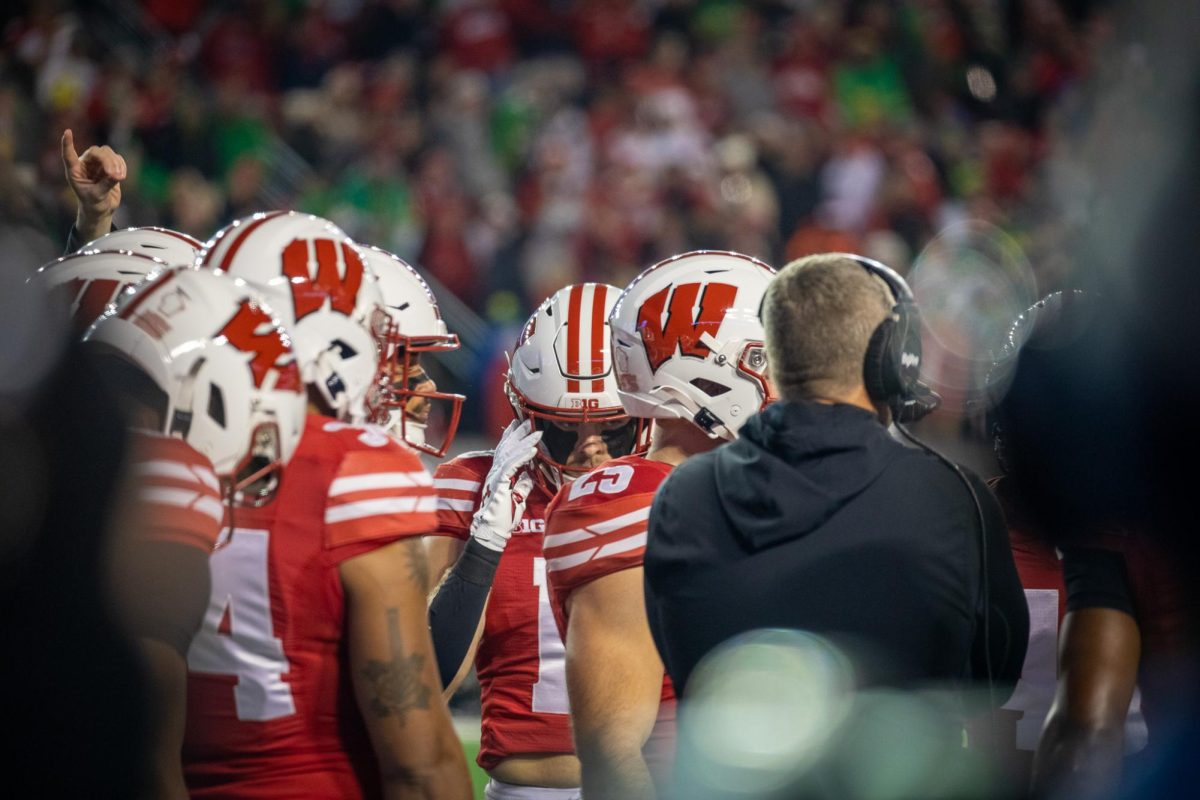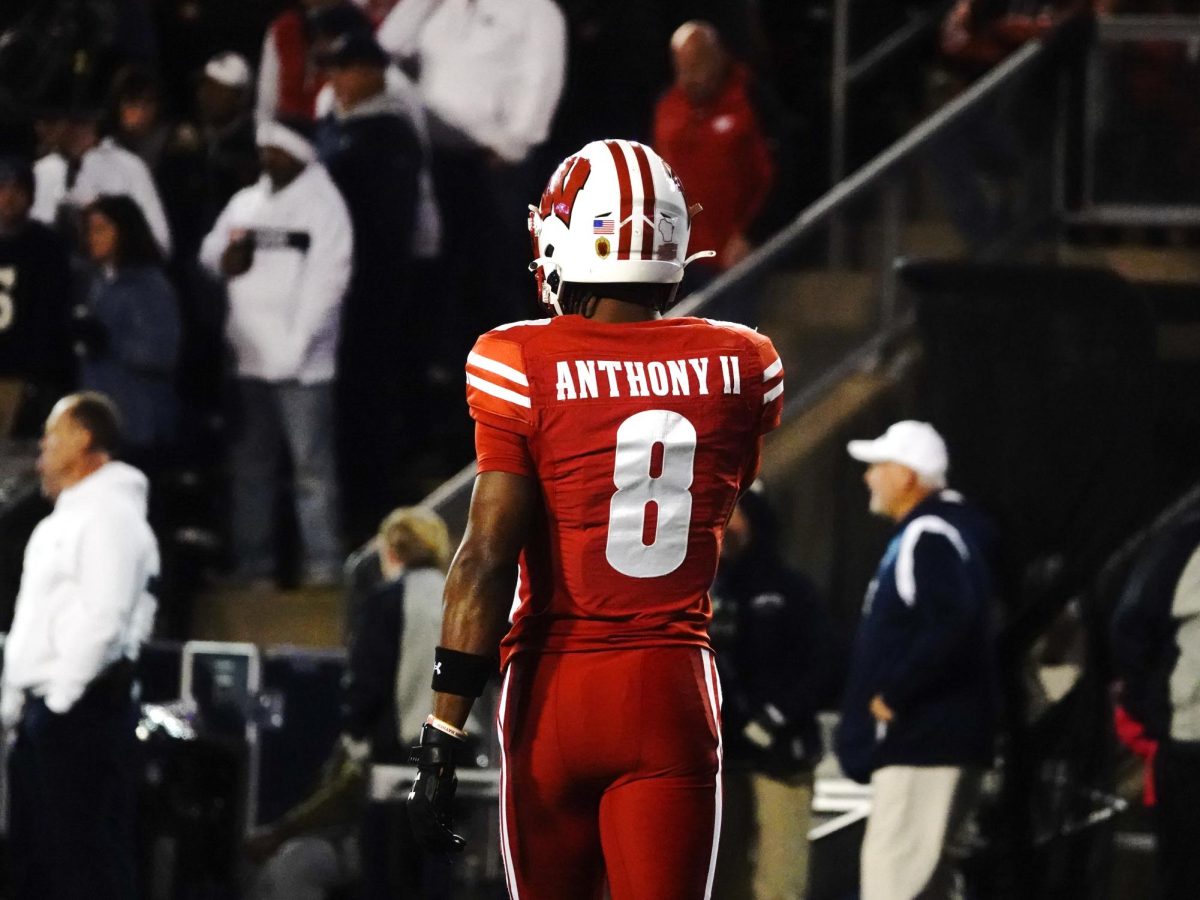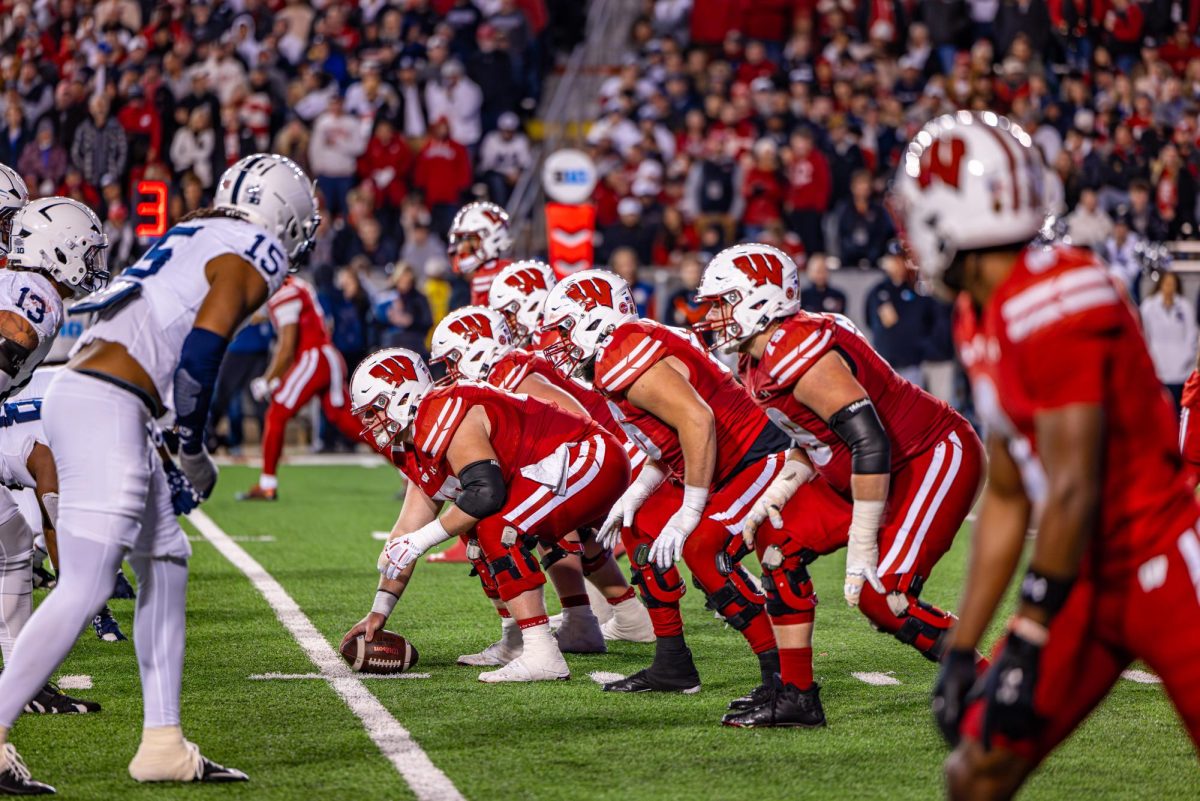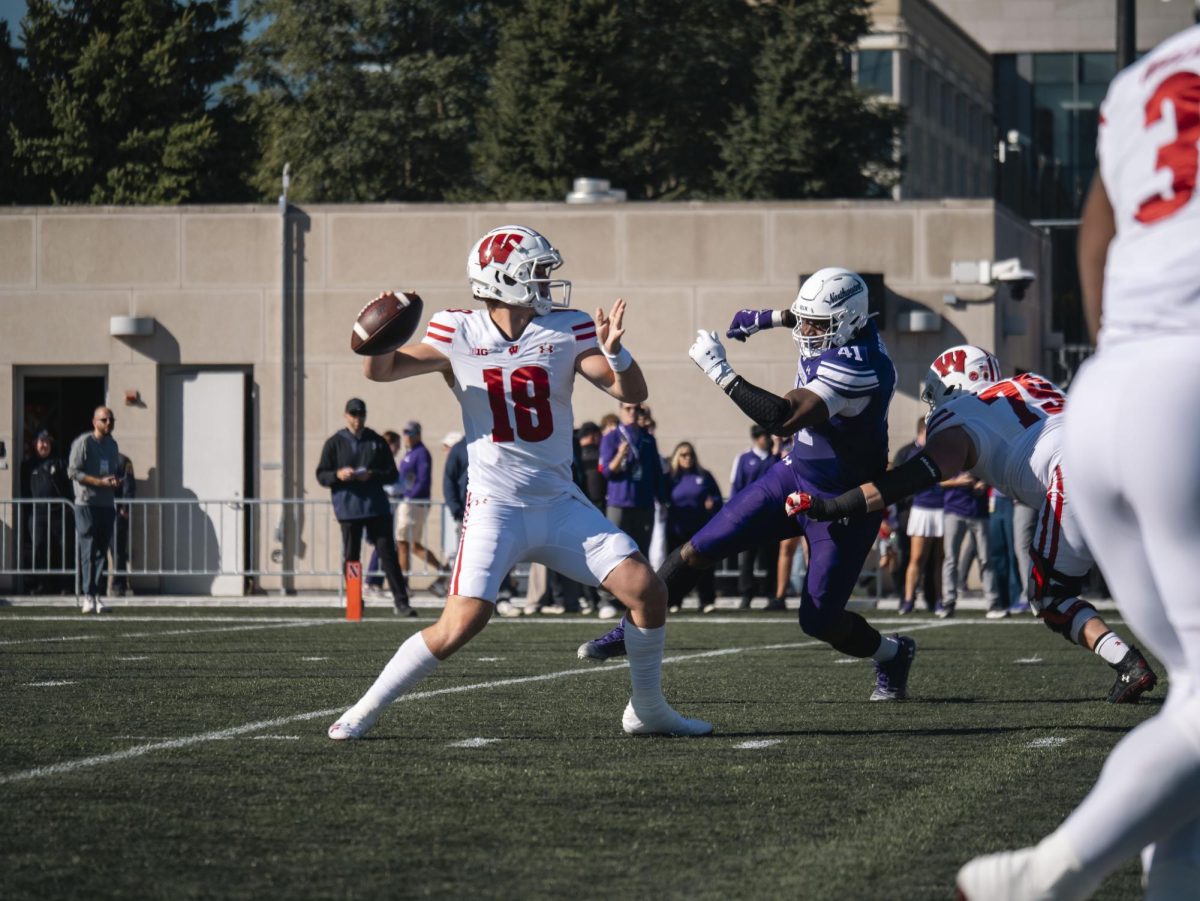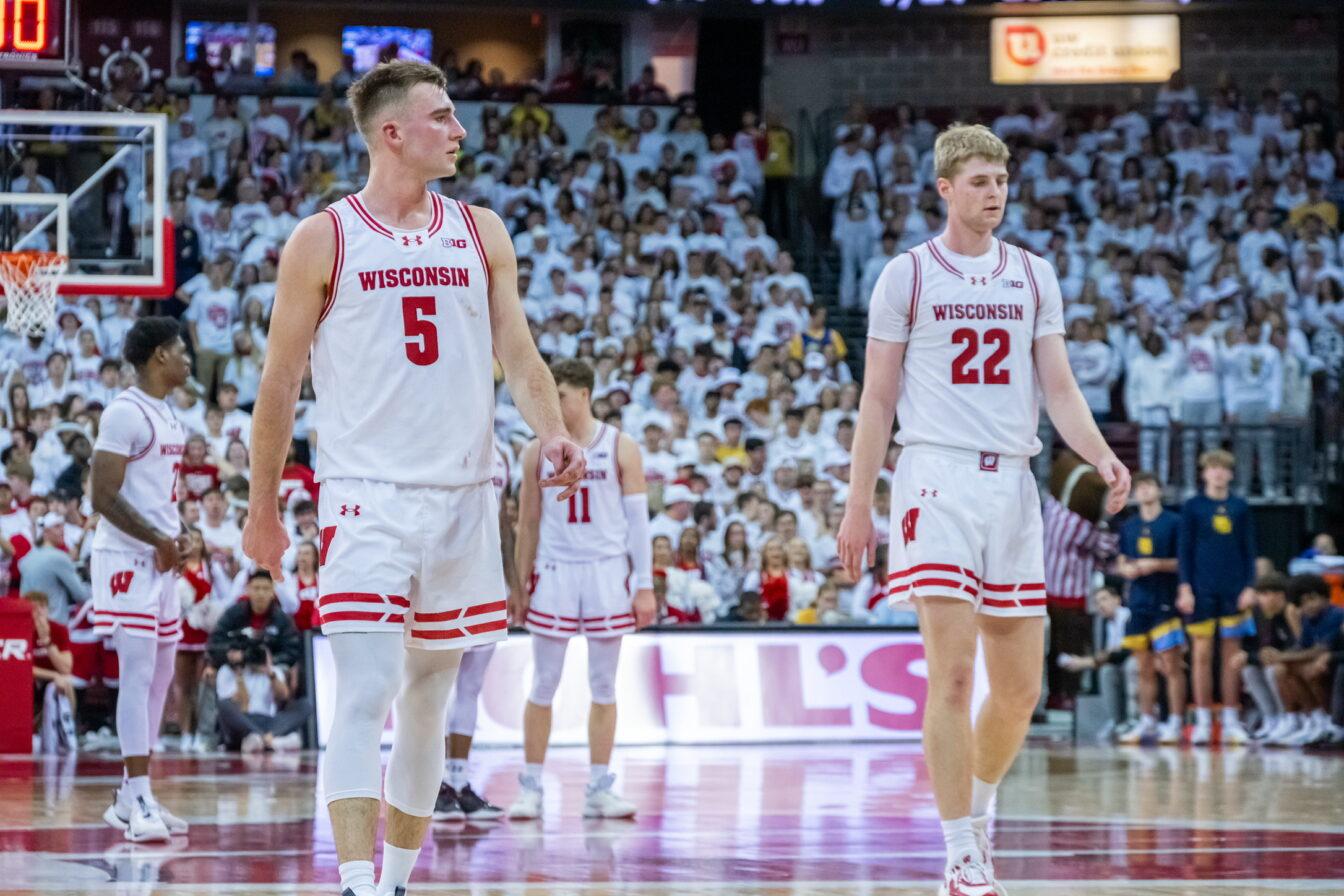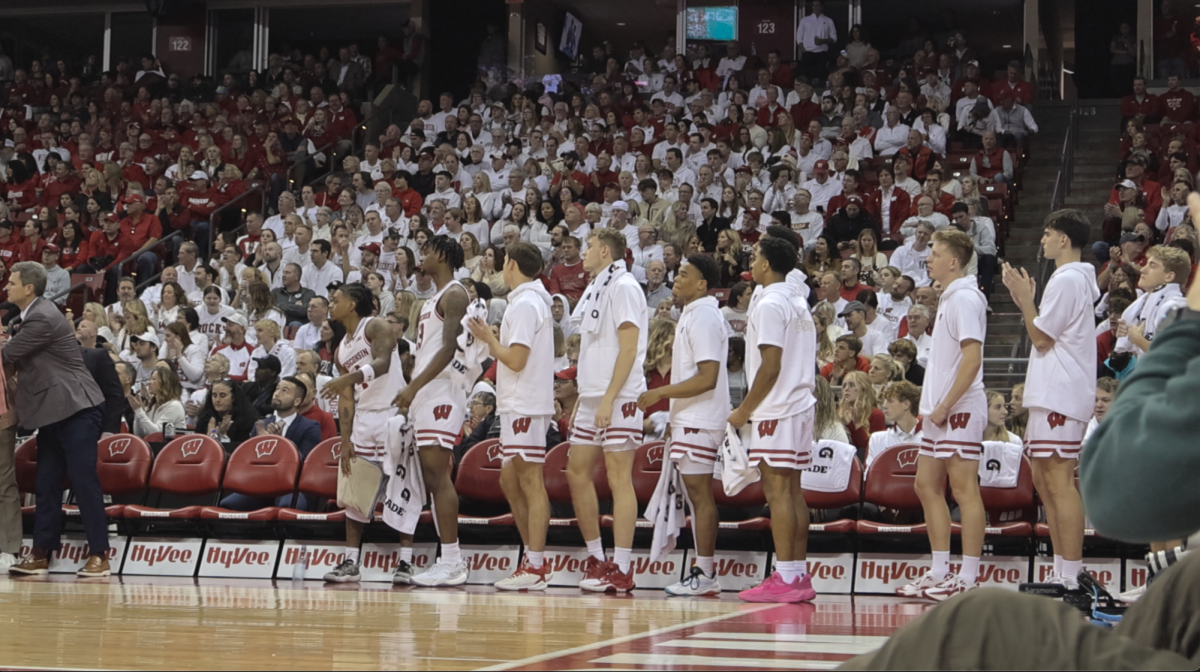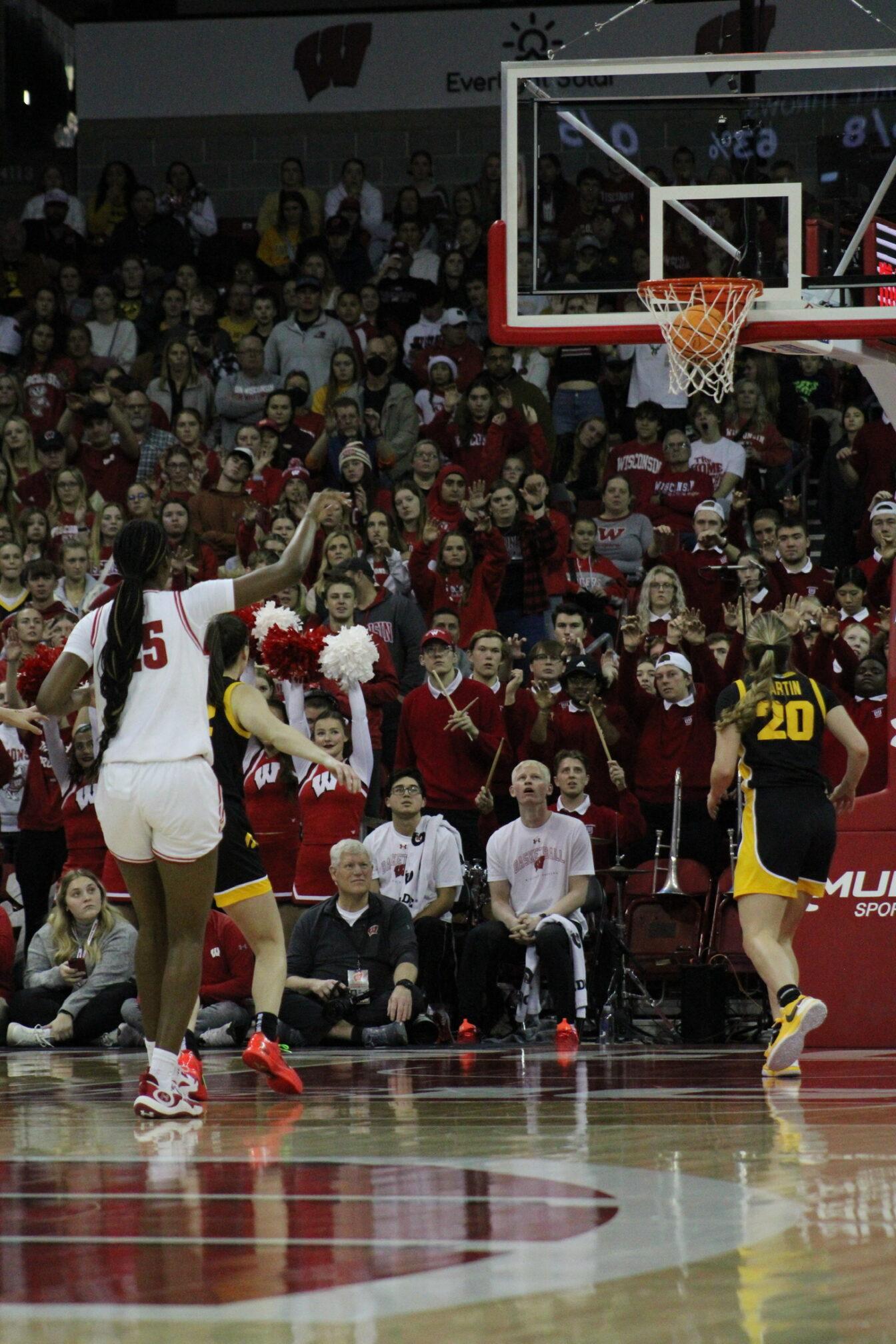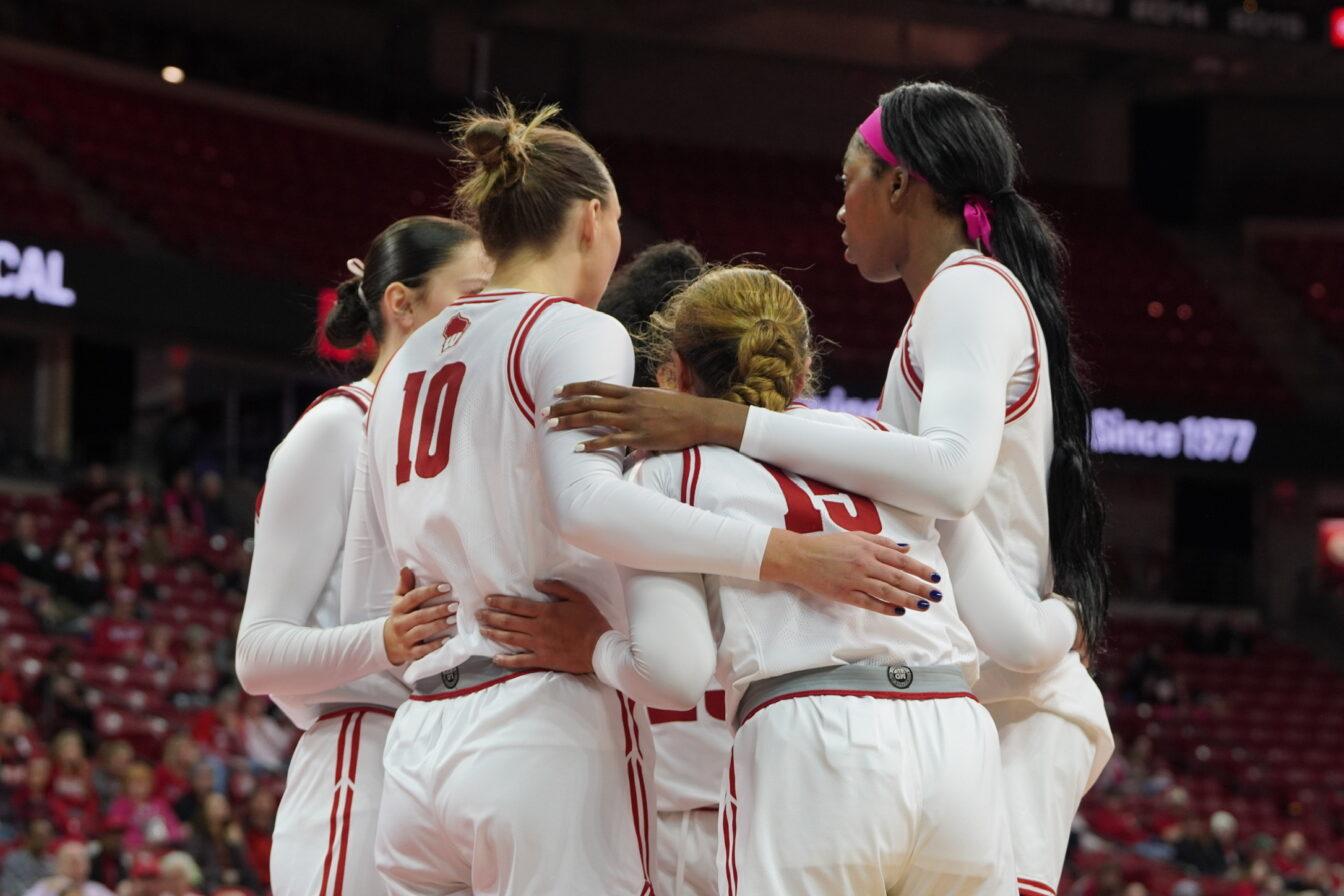
Forget the 83 points from Saturday. It’s hard not to; everybody from Los Angeles to New York has criticized Bret Bielema for dropping a touchdown tsunami on Indiana. Instead, look to Bielema’s comments from Thursday; the Wisconsin head coach said his offense was clicking better this season than last.
It’s quite the claim, considering the Badgers led the Big Ten in total offense last season, with 416.9 yards per game, as well as scoring offense, at 31.8 points per game. UW scored 51 points against Hawaii and dropped over 40 on Michigan and Wofford. But even more so after IU, the 2010 Wisconsin offense is living up to all expectations. So does that make it a step up from the 2009 edition?
“Yes. I definitely would [say so],” senior left guard John Moffitt said. “We lost two starters last year. We have the same quarterback, same running back, same O-line. I think that’s only natural, you have an experienced group; you’re expected to be producing.”
Produce they shall. Wisconsin is averaging 40.2 points per game, which if it holds up, would easily surpass the program record of 34.3 points per game, set in 2005. The Badgers are averaging 428.5 yards per game, which would be just off the 455.2 yards per game mark set in 1993. But despite hiccups along the way, the UW offense is everything it was hoped to be, as a unit returning all but one starter. Wisconsin finally returned a starting quarterback in Scott Tolzien and had 2009 Big Ten Offensive Player of the Year John Clay back. The massive and talented offensive line was back and healthy, and UW returned a number of experienced wide receivers. The biggest thing about experience might be how it showed during the week, though, in addition to on the field. Multiple players have said it’s UW’s preparation in practice that has paid off come gameday, with the veteran leadership being an essential part of that.
“I think so, just because as seniors, you’ve got that smaller window of opportunity, so it’s more important to you,” Tolzien said. “You’ve learned through the years how important that is.” “The older guys can set a tone with that, whereas you have group of young guys and they kind of think ‘Oh, my reputation will win this game.’ Which is not the case, that’ll never happen,” Moffitt added. “Preparation wins games.”
But no matter how prepared a team is, it needs the personnel to execute the game plan. And the Badgers have the right mix of talent to form an elite offensive unit. There are not a lot of weak points on the offense. Tolzien is an effective passer who doesn’t make many mistakes. Besides Clay, UW has all-around back Montee Ball and shifty speedster James White. Nick Toon gives UW physicality at receiver, while Jared Abbrederis and David Gilreath provide speed. The tight ends block and catch, and the offensive line has shown it can handle just about any defense out there. Simply put, it’s as balanced a unit as an offensive coordinator could want.
“I think we’ve got enough that you have to have the ability to do whatever you need to do and not be hesitant to go about that any number of different ways,” UW offensive coordinator Paul Chryst said. But it all boils down to one thing for the man calling UW’s plays. “Talent, talent and talent,” Chryst said. “You’ve got to have players. Guys that have talent and a work ethic, and an unselfishness to do their job within the scheme of the team.”
As mentioned, the Badgers aren’t lacking in that department. Left tackle Gabe Carimi is a likely first-round NFL pick, while tight end Lance Kendricks is a Mackey Award (given to the nation’s top tight end) semifinalist. But just as important as the first-string talent has been the ability of the guys further down the depth chart. The only players to start every game have been Tolzien, Carimi and Moffitt. Despite the successful 9-1 season to this point, UW has not been immune from injuries. But when Toon or center Pete Konz went down with injuries, players stepped in and the offense just kept on rolling. Konz started every game up to Saturday, but UW got big contributions from replacement center Bill Nagy.
“That’s what we preach here; the depth chart’s just a depth chart,” Ball said. “You’re going to get your chance when the guy in front of you goes down.”
Perhaps the biggest testament to the success of that depth, though, has been simple execution. It’s one thing to put up 50 points on Wofford. It’s another thing to struggle against good teams, as UW did in putting up a combined 23 points against Iowa and Ohio State in 2009. This season, the lowest point total UW has been held to is 20, against Arizona State. And in the big games, the big drives that were lacking in the past were there for Wisconsin in 2010. Tolzien’s methodical march down the field against Iowa at Kinnick was something Wisconsin just hasn’t done in the past.
“That’s what it comes down to. In the end, execution is what gives you a chance,” Chryst said. “If you’re doing things, you’re executing. That’s what it’s all about, that’s the whole thing; if you execute, then the results take care of [themselves].”


